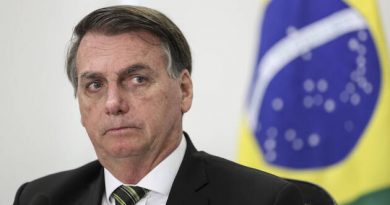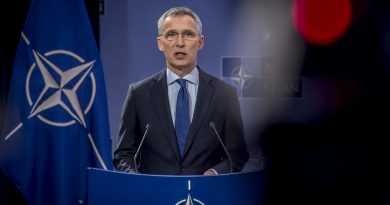FOCUS on NATO: Giving Aid
Sophie Ulm
Staff Writer
As the war in Ukraine stretches on, many NATO member countries and their allies are stepping up the aid that they are giving to Ukraine. Most recently, the United States and Germany have agreed to send tanks to Ukraine, reports AP News. This comes as an addition to other combat vehicles that the two countries have pledged to send. This comes after concern from Germany about being the only state to send such advanced weapons into Ukraine, and facing Russian pushback alone, according to AP News.
According to Newsweek, Germany is preparing to give Ukraine 14 of its Leopard 2 main battle tanks, while the U.S. is sending approximately 30 of its M1A2 Abrams. In addition to supplying the tanks, training will be given to Ukrainian military members in Germany. Germany will also supply logistics assistance and maintenance.
The U.S. and Germany are not the only NATO members looking to give aid to Ukraine. Newsweek reports that Poland and Finland, which are not a part of NATO but have requested to join the alliance, have both publicly voiced willingness to send tanks to Ukraine. Spain, Portugal, the Netherlands, Norway, Denmark, France, and the United Kingdom are reportedly assessing the possibility of sending their own tanks to the Ukrainian forces as well.
With the arrival of the new weapons, Ukrainian leaders are now requesting Western fighter jets to advance their efforts. According to Al Jazeera, Ukraine’s air force consists of Soviet-era fighter jets, many of which were made before Ukraine gained its independence over 30 years ago. Many Western leaders are still against this idea, but Ukrainian leaders have cited that until recently many leaders were against sending tanks to them as well.
This has also been an opportunity for NATO to attempt to increase its connections in Asia. NATO Secretary General Jens Stoltenberg recently visited South Korea, reports NATO, where he spoke at the CHEY Institute. In his speech, Stoltenberg cited the growing relationship between South Korea and NATO, as well as the threats posed by North Korea. Stoltenberg thanked South Korea for condemning Russia’s actions and cited the relevance of the Ukrainian war to people everywhere threatened by authoritarian leaders.
While Stoltenberg’s speech generally had an appreciative tone, many NATO members hope that South Korea and other Indo-Pacific allies will do more to support the Ukrainian efforts. According to Reuters, Stoltenberg also urged South Korea to step up their support in terms of military means. Many of NATO’s allies in that region have voiced their support but have not given weapons to Ukraine. South Korea has signed many deals providing large amounts of military equipment to NATO member Poland since Russia’s invasion of Ukraine, but President Yoon Suk-yeol has cited a South Korean law that prevents the nation from giving military aid to a country in active conflict as the reason the country has not given the same type of support to Ukraine. Another one of NATO’s key concerns with the conflict is that a Russian win could send the wrong message to Beijing, according to Reuters.
Not all NATO members are supportive of these aid decisions. Croatia’s President Zoran Milanovic recently stated that “it is clear that Crimea will never again be part of Ukraine,” according to Insider, also stating that he was against sending any lethal weapons into Ukraine, as this would prolong the war. This statement is in stark contrast to the stance that many other NATO leaders have taken, as well as the stance that Croatia’s Prime Minister Andrej Plenkovic has taken. While President Milanovic says he hopes to keep Croatia out of the conflict as much as possible, Prime Minister Plenkovic has claimed that these comments hurt Croatian foreign relations.
German Chancellor Olaf Scholz emphasized the importance that Western leaders are putting on the issue, saying that they want to continue supporting Ukraine but also prevent the war “from escalating into a war between Russia and NATO,” reports Al Jazeera. The one thing that has been made clear is that there is no chance of troops being sent from the West into Ukraine, but as the one-year mark of this war approaches it is expected that other forms of Western aid will continue to flow into Ukraine.
Image courtesy of NATO, Flickr




